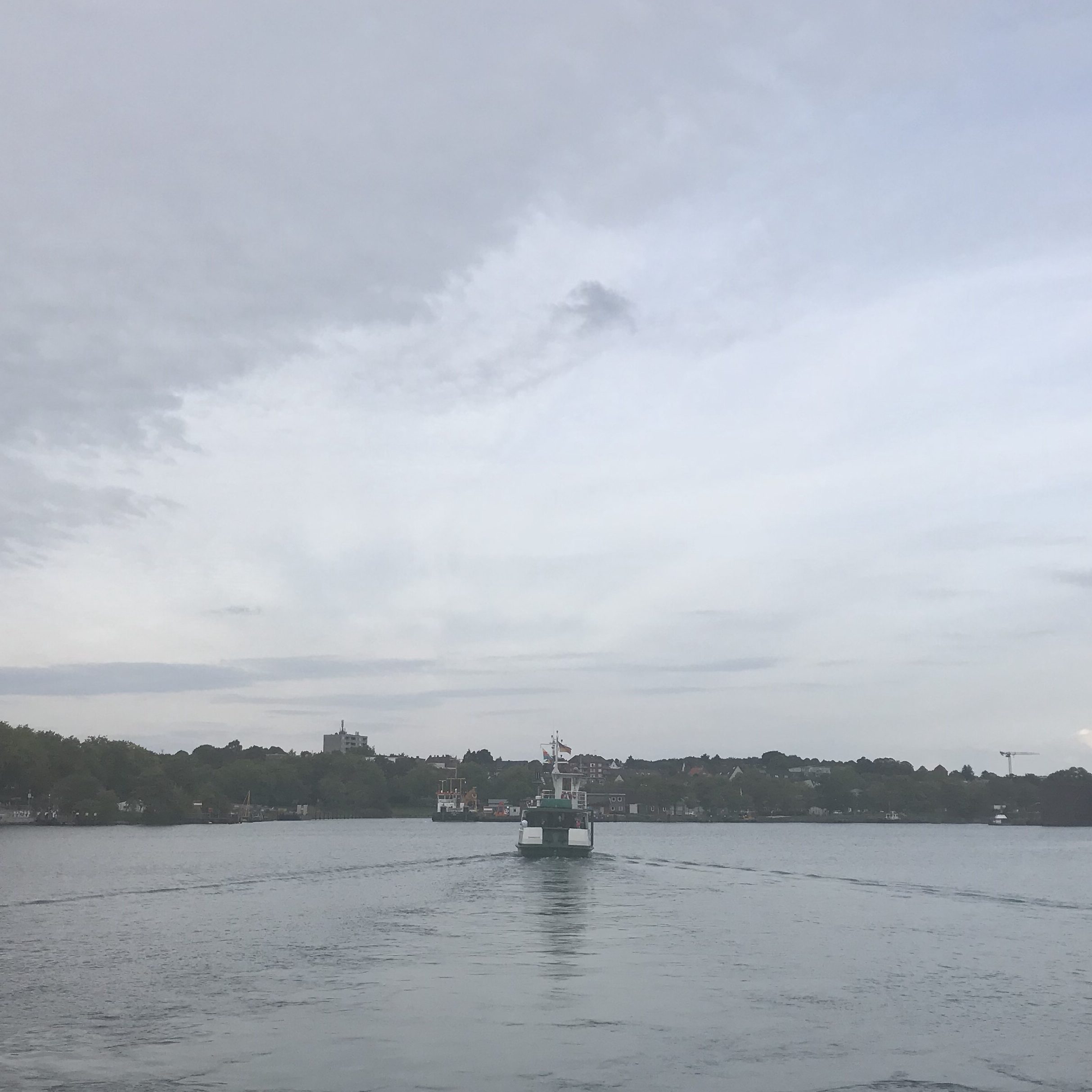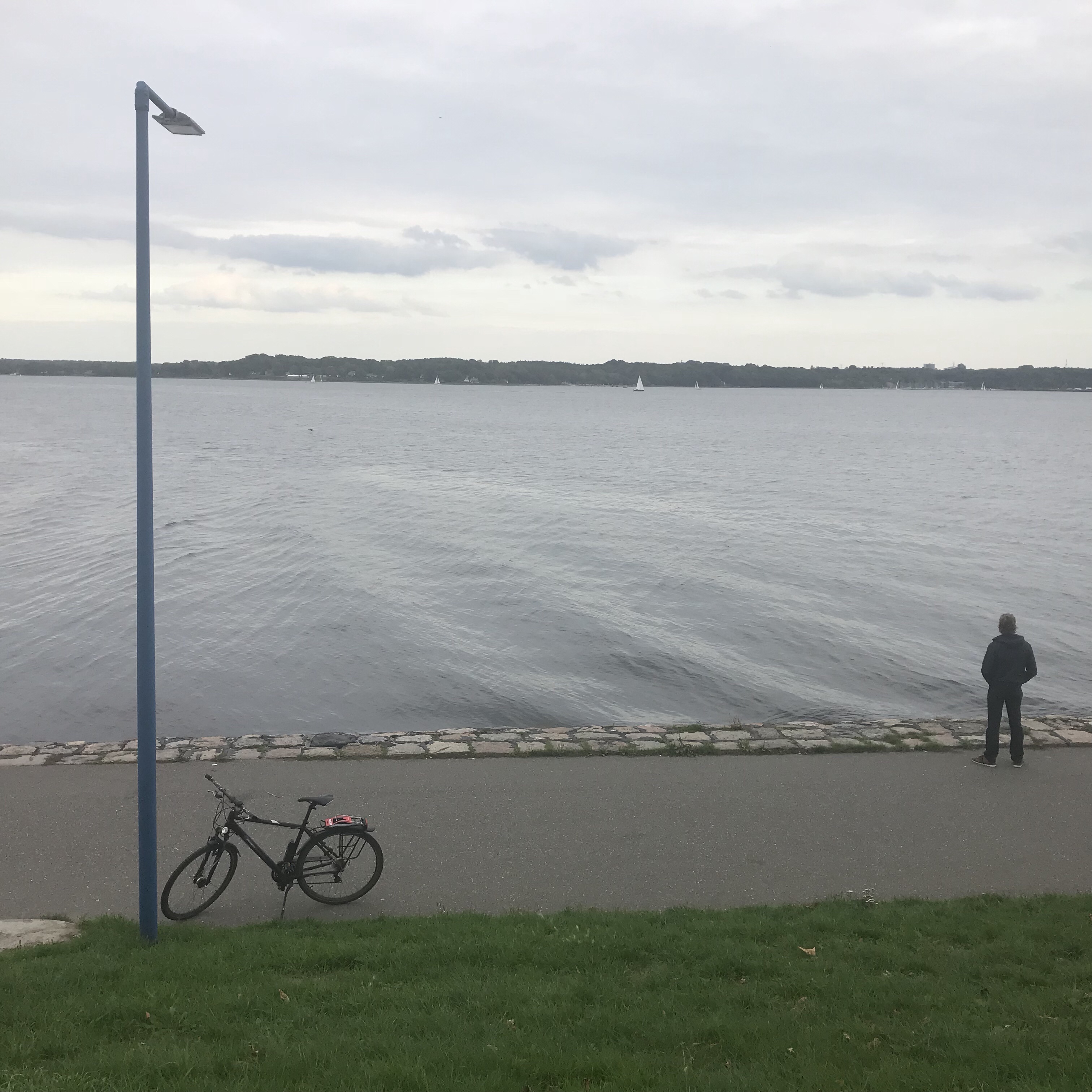
Wave watching: A wake, another wake, and a mystery wave
And we are wave watching again!
A ship’s wake and the different zones within
Here is the wake of the little ferry that goes across Kiel canal.
I love how you can see the different parts that a wake consists of: The V with the ship at its tip that consists of wavelets from the bow wave and that spreads outwards. And then the turbulent wake where the ship has physically displaced the water when sailing through, and that then has been thoroughly mixed by the ship’s propellers.

This second, turbulent wake actually changes the water’s surface for quite some time. Propellers put the water in rotation and it slowly entrains surrounding waters, and this turbulent motion looks substantially different from the “normal” sea surface. It can even be spotted from satellites long after the ships are gone. You’ve probably sometimes noticed streaks on the sea even though no ships were present — those might well have been the remains of wakes!
But speaking of ships that have sailed…
Wake of a ship that sailed past a while ago
Here is another example of a wake being visible quite some time after the ship has sailed past. However what we see here is the feather-y train of wavelets from the V reaching the shore.

While we were looking at it, my friend mentioned that the waves seemed to approach a lot more slowly than she had expected. That’s because the movement we first notice is the phase velocity of individual wave crests. But when you look closely, you can’t follow one individual wave crest for a very long time, it always appears and you have to start over. That’s because the signal, the V itself, only moves with the group velocity, which moves at half the velocity of the wave crests. That really looks confusing! Unfortunately I didn’t get a good movie of this. But there is always next wave watching session! :-)
And a mystery wave!
But then what would any wave watching session be without a riddle.
Any idea what caused the wave pattern below? Not the obvious, larger waves, but the concentric circle segments that radiate outwards from somewhere in the bottom right?

This is a case where it is really helpful when you recognize where the picture was taken, because there is some important information missing from the picture: The straight edge continues on for a little to the right, and then it opens up to a fairly long channel coming in.
However what you do see is the wind direction from the way the water is smooth right at the shoreline and then ripples start to form as you look further away: The wind is blowing out onto the water.
Now combine those two informations and you understand how that wave pattern was generated!
Diffraction at a “slit”
Wind-generated waves move as (more or less) straight crests out of the channel that opens into Kiel fjord just outside the right edge of the picture above. Then, suddenly, they aren’t bound at the sides any more, and what happens looks like diffraction at a slit (except the slit is fairly wide in this case): The straight crests turn and form 90 degree circle segments that radiate outwards. Voila!